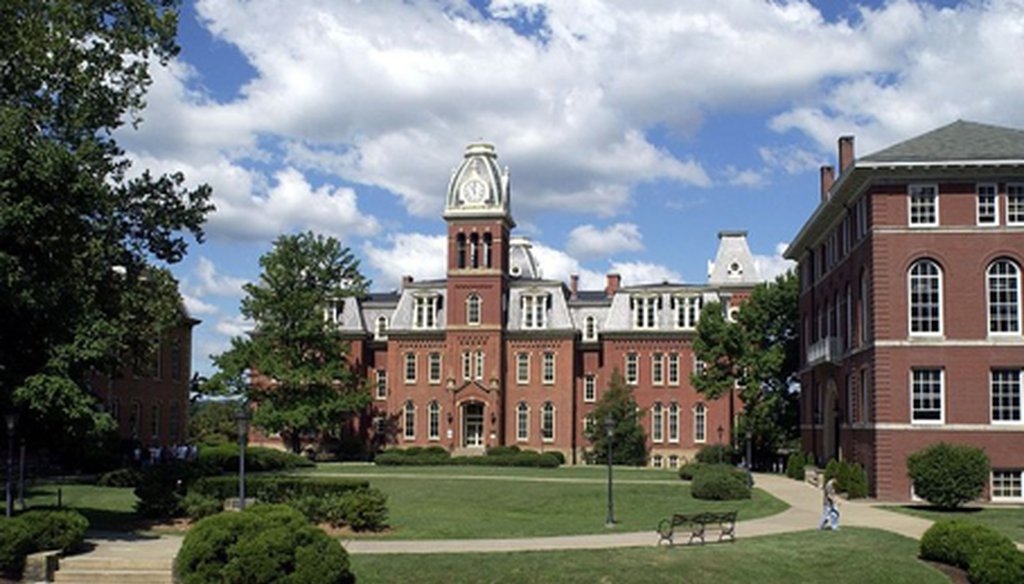Stand up for the facts!
Our only agenda is to publish the truth so you can be an informed participant in democracy.
We need your help.
I would like to contribute

Woodburn Hall on the West Virginia University campus. (Wikimedia Commons)
The president of West Virginia University said the state has drastically reduced the amount of money it sends to the university’s budget over the past four decades.
West Virginia University’s student newspaper, the Daily Athenaeum, published an article on Sept. 8 in which they interviewed WVU President Gordon Gee. During the interview, Gee discussed the university’s changing funding streams during his two stints as WVU president, from 1980 to 1985 and from 2014 to the present.
"When I was here the first time around in 1980 as the president, 70% of our budget came from the state," Gee said, "about 12 or 13(%) comes from the state now."
That’s a large shift over nearly four decades. Is Gee correct?
Let’s start with the state’s current share of the WVU budget. We found that Gee’s estimate was in the ballpark, but a little low. WVU’s audited financial statement from 2018, the most recent one available, shows that 15% of the university’s budget came from the state appropriations last year. The other sources were tuition and fees (37%), gifts, grants, and contracts (23%), and auxiliary enterprises (14%), with all other sources accounting for 11%.
The 1980 figure proved to be much more elusive. Without the information, we are not comfortable rating this statement on the Truth-O-Meter.
We made multiple efforts to secure supporting data from the university’s communications office, but officials were unable to provide data from that far back. We also checked with the state auditor’s office, who told us that they did not have any data that far back, either.
The oldest data we could access covers 2011, and it shows that Gee is right about this much: Over the past eight years, the level of state appropriations as a share of the WVU budget has been declining. Here’s a chart:
This shows that the state share of WVU’s budget has shrunk from 22% in 2011 to 15% in 2018, a decline of about one-third in less than a decade.
We also found that WVU’s state funding decline is mirrored by universities across the country.
According to the Association of Public & Land-Grant Universities (APLU), state appropriations to public four-year colleges and universities has seen dramatic decreases across the board since the 1980s.
Specifically, between 1986 and 2016, the national average for state appropriations as a share of higher education budgets declined from 41% to 18%. That’s a decline of more than half.
There is no doubt that the percentage of the revenue stream provided by the state has fallen both at WVU and at universities nationally in recent years, although the last official figure for WVU is a few percentage points higher than Gee indicated in his interview.
But we were unable to document whether the state’s percentage was as high as 70% when he first became WVU president.
Our Sources
Daily Athenaeum, "President Gee discusses pedestrian safety, privatization, University finances and more," Sept. 8. 2019
2017-18 West Virginia University audited financial statement
Email interview with Mike Brost, assistant director of public affairs at the Association of Public & Land-Grant Universities, Sept. 17, 2019



















